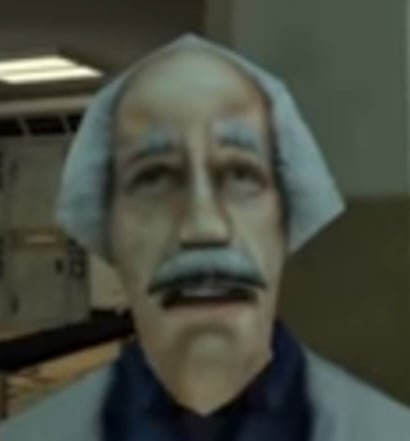One tip is to break the task into smaller tasks.
For example, when I tidy up the house, my task isn’t to tidy up the house. My task is to take this one object and put it where it belongs. Then I start on another task until I’m out of time or tasks.
The best thing I ever learned to help with cleaning is that no matter the size of the mess, rooms only have 5 things in them:
-
Trash
-
Laundry
-
Dishes
-
Things with a place
-
Things without a place
If you clean one category at a time it’s a lot less overwhelming. Shout out to the book How to Keep House While Drowning for more tips like that, it’s written specifically for neurodivergent people.
-
Right, but then I get overwhelmed with this huge list of tasks!
You don’t have a huge list of tasks. You have a single task, then you find another single task.
I like to explain it as function currying to computer savvy folks… your first task is to do the first chunk, your second and only remaining task is to create a new task to do next.
https://en.m.wikipedia.org/wiki/Currying
Hack
the Planetyour Brain!Uncurrying is the dual transformation to currying, and can be seen as a form of defunctionalization. It takes a function f whose return value is another function g, and yields a new function f’ that takes as parameters the arguments for both f and g, and returns, as a result, the application of f and subsequently, g, to those arguments. The process can be iterated.
none of these words are in the bible
Oh, sorry, that’s from the book of Mormon.
No. No do task, only wait. Then panic.
Never failed me yet
Stamets, put Lemmy down! You can post a meme once you’ve done a task.
Ha! You fool! I was playing Surviving Mars and getting my dopamine by completing multiple tiny tasks in a video game!
Why can’t I gamify reality so I can hyperfocus on real shit? 😩
(Serious: Because it’s not the winning of little goals that hooks me; it’s the fact the game is actually fun and most tasks IRL are boring as fuck which ADHD brain does not like.)
You might try to find an app that helps gamify your to-do list. I got LifeUp configured on my phone to remind me to do tasks regularly and give me ‘coins’ and xp for doing them. Too bad I’m too lazy to slip the rewards part to fuller game it.
I’ve managed to force myself to do tasks immediately. Which just fucks with my autism because often I’m in the middle of something else when a new task pops up and being interrupted is the hardest thing to not lose my shit over.
And then you get more tasks, and the tasks never end, so you just stress about the tasks again 😭😭 I might go on a vacation whenever I can afford one.
Me when I have to make calls at work 😭
Me
when I have to make callsat work 😭
Y’see, the first item on my to-do list is “Procrastinate”
I don’t think i will.
WRONG!
I write the tasks in my little notebook and then I don’t have to think about it until later.
DISCLAIMER: This only works if you actually review the notebook periodically, as I have recently discovered.
I’m not even kidding - I started doing the bullet journal method (this video) recently and it is not an understatement to say it changed my life. I’m just talking the basic method in the video - I always thought bullet journaling was all of the pretty spreads and fancy lettering but that’s not at all what it is about. It was developed by a guy with ADHD to help himself manage his own brain in school and work.
Knowing that if I write something down I have a process to evaluate it later means I really can stop stressing about it. And then at the end of the day / week / month I can look over the tasks, evaluate if they are actually important, and put them where they need to go.
Knowing that I have those periods of reflection each week / month to migrate and organize tasks means I don’t stress about a super long list of tasks either. Before I always felt like I had to do a task ASAP or else I would forget it and it wouldn’t get done for months (if ever). Now I just don’t worry about that.
It has helped me also a LOT with planning a reasonable amount of things to do for the day. Yes, these 10 things NEED to be done, but they don’t NEED to be done TODAY - I’ll put them in my weekly or monthly when I am reviewing unfinished tasks for the day. Then when I start a new day, I will review the weekly, monthly, and previous day and pick a couple unfinished things that are important and put them on my daily list.
Having that structure and writing things multiple times also helps me with executive function. It makes everything seem much more achievable.
TL;DR - Bullet Journal Method was made by an ADHD brain, and I recommend it. 10/10. Just watch this short video and also maybe check out some of the other videos and podcast that Ryder Carroll has done
I place a tiny sticky on my work keyboard every couple days with tasks to stay on track. The satisfaction I get from crossing tasks off one-by-one then ripping the sticky when all are completed is very gratifying. I try to make it like a game to stay stimulated. Also constantly remind myself to finish what I started. It’s still challenging but helps.
That sounds like a fun way to do it!
Hey, OP, fuck you!
Heeyyyyu fuck yooouuu!
But the stress motivates me to do the task
🧠: thank you, no.








